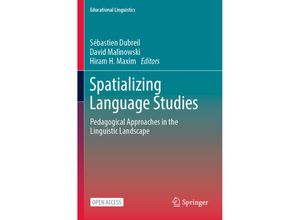This open access volume offers valuable new perspectives on the question of how mobility
locatedness and immersion in the physical world can enhance second language teaching and
learning. It does so through a diverse array of empirical studies of language literacy and
culture learning in the linguistic landscape of visible and audible public discourse. Written
from conceptually rich and disciplinarily varied perspectives its ten chapters address
methodological and practical problems of relating language learning to the lived and rapidly
changing places of the late modern world. Whether it is within the four walls of a school in a
nearby multilingual neighborhood in a virtual telecollaborative space or in any other
location where languages may be learned this volume highlights different configurations of
learning spaces the leveraging of real-world places for critical learning and ways to
productively 'dislocate' language learners from preconceived notions and standardized
experiences. Together these elements create conditions for a language and literacy pedagogy
that can be said to be robustly spatialized: linguistically and culturally complex
geographically situated historically informed dialogically realized and socially engaged.



